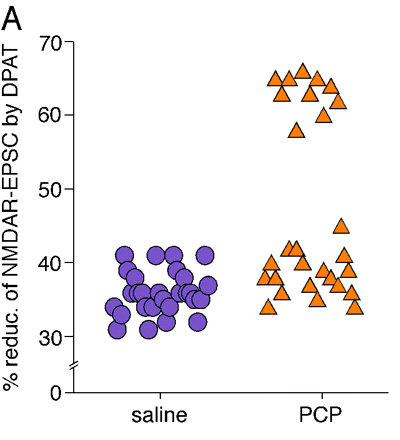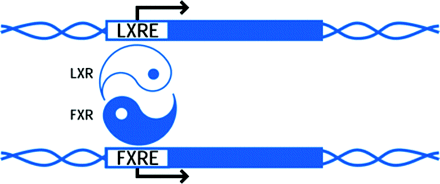Emerging concepts from the recent literature
G Protein Signaling in Psychiatric Diseases: Bringing “Accessory” Proteins Center Stage

Most psychotropic drugs patients, and rare act via G pro-diseases. The tein–coupled receptors (GPCRs). In article outlines the interesting story simplistic of terms, activated GPCRs function by favoringthe development of some drugs for rare diseases, andthe GTP-bound form of G proteins over the GDP-bound form. In direct contrast, RGS (regulator of G protein signaling) and AGS (activator of G protein signaling) proteins act to undermine the GTP-bound form of G proteins. In the brain, AGS3 is prominent and stabilizes the 5.5GDP-bound form of Gi proteins. Chronic cocaine exposure induces a long-lasting increase in levels of AGS3 as well as RGS-2, thereby decreasing dopamine D2/Gi–mediated signaling while reinforcing D1/Gs–mediated signaling. This imbalance is believed to underlie cocaine reinstatement. In the January 2007 issue of Mol Pharm, Gu et al. present evidence that RGS4, previously linked to susceptibility to schizophrenia, inhibits the 5-HT1A–mediated inhibition of NMDA receptors. In rats, inhibition of NMDA current by phencyclidine (PCP) is a model of schizophrenia. Gu et al. show that PCP decreases RGS4 concentrations and thereby promotes 5-HT1A inhibition of NMDA current. This study highlights the central role of “accessory” GPCR regulating–proteins in pathologies, such as psychiatric disorders and addiction, associated with fine modulation of synaptic plasticity. [
] ––J Bockaert, CNRS, France
New Wrappings for a Trojan Horse

Gene delivery systems based on non-viral vectors present three major problems: nuclear targeting, controlled expression, and non-specific immune responses. The authors of a forthcoming JPET paper have engineered a liposomal gene delivery system that addresses all three challenges. Liu et al. co-delivered 1) a plasmid containing a reporter gene (i.e., luciferase) downstream from a farnesoid X receptor response element (FXRRE) along with 2) a plasmid encoding a cognate nuclear receptor (i.e., the farnesoid X receptor [FXR], which contains a nuclear localization sequence). The experimenters also controlled the liposome preparation so as to include or exclude small-molecule modulators (e.g., of FXR activity). Delivery of the FXRRE plasmid to FXR-lacking cells resulted in little luciferase expression unless the FXR-expressing plasmid and chenoxy-deoxycholate, a small-molecule FXR ligand, were included in the lipsosomes. Moreover, the inclusion of capsaicin, a non-inflammatory agent, and PD-98059, a MAP-kinase inhibitor, significantly reduced non-specific inflammation as reflected by decreased serum TNF-α levels of mice administered with the “designer vector.” [
]—C Beeson, Medical University of South Carolina
Lower Occupancy = Lower Weight

A manuscript appearing in the June issue of JPET offers some new insights into the pharmacology of the cannabinoid receptors that could lead to anti-obesity treatments. The study describes the pre-clinical evaluation of MK-0364, one of the two CB1 cannabinoid receptor antagonists/inverse agonists that have been described in the literature. The authors demonstrate that MK-0364 acts as a highly potent antagonist against agonist-induced hypothermia. It also dose-dependently reduces food intake and weight gain in various rodent models, including the diet-induced obese rat. Chronic administration of the agent led to pronounced weight loss in the obese rat, reflecting a loss in body fat. Only partial CB1 occupancy was needed for weight loss, and partial occupancy of the receptors was best correlated with reduced food intake and weight loss. This observation is consistent with their report that heterozygous CB1 knockout mice have a lean phenotype relative to wild-type litter mates. It had already been known that the homozygous CB1 knockout mice exhibit a lean phenotype. The CB1 receptor has been implicated in the control of energy balance leading to the hypothesis that inhibition of the receptor could be used for control of obesity. The results of this study offer strong support for the hypothesis and open the door to a new route to anti-obesity therapeutics. [
]—C Beeson, Medical University of South Carolina
Maintenance of Stem Cell Pluripotency Goes Small
Embryonic stem cells (ESCs) are normally maintained in the undifferentiated state by specific factors that repress activation of differentiation-specific genes. To date, no pharmacological agent has been found that can regulate differentiation of ESCs. It is therefore intriguing that Miyabayashi et al. have identified a small molecule, IQ-1, that regulates Wnt/β-catenin-driven long-term maintenance of the undifferentiated state. β-catenin can associate with CREB binding protein (CBP) to inhibit differentiation, or with p300, to favor differentiation. IQ-1 was found to bind the PR72/130 subunit of the serine/threonine phosphatase PP2A. This binding decreases the phosphorylation of p300, which subsequently decreases the β-catenin/p300 interaction and promotes β-catenin/CBP mediated transcription, which leads to ESC proliferation without differentiation. The ability to control proliferation and differentiation of ESCs with small molecules will undoubtfully facilitate their use in regenerative medicine. [
]—PA Tsonis, University of Dayton
- © American Society for Pharmacology and Experimental Theraputics 2007



